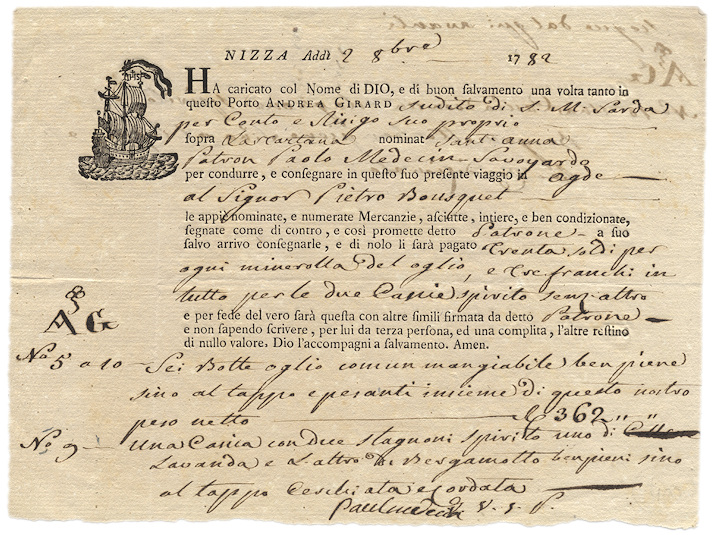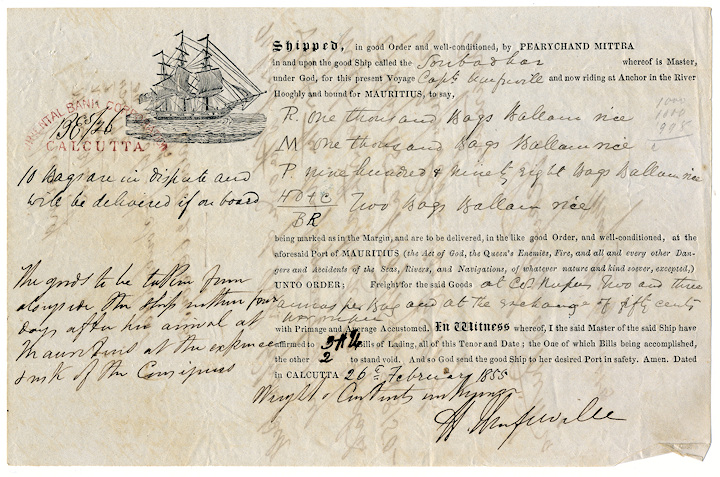 |
|
| News About Us Membership Events Links |
|
Bill of Lading
The Bill of Lading has been an essential document in international trade for centuries. However, the modern Bill of Lading as we know it today has its roots in medieval Europe. As international trade continued to grow, the Bill of Lading evolved into a crucial legal document
Landscape in format, the Bill of Lading often has an illustration at the top left showing a wharf side scene of ships being laded or more commonly a ship at sea. The wording of the bill usually begins "Shipped in good order and well conditioned" followed by manuscript additions detailing the name of the ship, its Master for the voyage, where it is at anchor, the destination port and description of the goods. The cargo, be it barrels, bags, bales or casks, is marked and numbered and the same identifying marks are also recorded in the left margin or the body of the document.
The hazards of the high seas in the 19th century were not overlooked with variation of this wording often included in the document: the act of God, the Queen's enemies, Fire and all and every other Dangers and Accidents of the Seas, Rivers and Navigations, of whatever nature and kind soever, excepted. The document concludes: And so God send the good Ship to her desired Port in safety. Amen. |
|
|
Home | News | About Us | Membership | Events | Links | Contact | Item of the month | Articles |
| Copyright © The Ephemera Society 2025. All Rights Reserved. |


